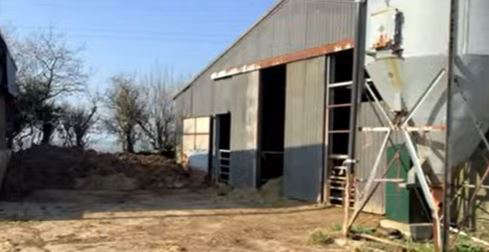
Further upgrades at Marsh Mills in Plymouth
A sewage treatment works in Plymouth could be upgraded to reduce pollution risks, if plans by South West Water are approved.
The company will almost double its storm water storage capacity at the site to reduce risk of sewage spills.
It hopes to build a motor control centre kiosk with three new pumps for a storm tank scheme at at Marsh Mills.
Visual impact will be minimised as far as possible practicable, the company says in its planning documents for Plymouth City Council, noise from new plant and equipment won’t be significant, and an odour management plan will be updated after the work is complete.
The kiosk will measure eight metres in length and three metres high.
Plymouth had a big increase in sewage spills in 2023, to over 3,000, and across the south west, the total hours of such spills almost doubled (inceasing by 83 per cent) from 58,249 discharges.
The company said 2023 was the fifth wettest since records began, causing an increase in storm overflows, and it has committed to almost double its investment in the environment to £2.5 billion until 2030.
It plans to spend £764 million on delivering a 62 per cent reduction in storm overflow spills by 2023, compared to its performance in 2023-24. Areas with bathing waters, like Plymouth, have top priority.
In 2016/17, South West Water upgraded Marsh Mills to prepare for the new town of Sherford, which will eventually have 5,500 homes.
South West Devon Conservative MP Rebecca Smith recently met with the company at the sewage treatment works to look at efforts being made to contain smells.
Odours, known as the “Plympton Pong”, have increased since building commenced at Sherford.
Miss Smith said fans had been installed above machinery to stop smells from rising and blowing over Plympton.
“The smells actually occur because the site is not yet at capacity, the reverse of what you’d think, meaning that sewage flows through the system less quickly,” she said.
“This partial flow increases septicity (when waste water sits stagnant without oxygen it starts smelling like rotten eggs). As more residents get their keys, move into Sherford, and flush their loos the smell should go.”
 Livestock processing plant refused at Shebbear
Livestock processing plant refused at Shebbear
 Two Devon warships could be sold to Brazil
Two Devon warships could be sold to Brazil
 Devon police dog honoured
Devon police dog honoured
 Schizophrenic knifeman given indefinite hospital order
Schizophrenic knifeman given indefinite hospital order
 Paignton Post Office petition goes to parliament
Paignton Post Office petition goes to parliament
 Fun park shuts two months after opening
Fun park shuts two months after opening
